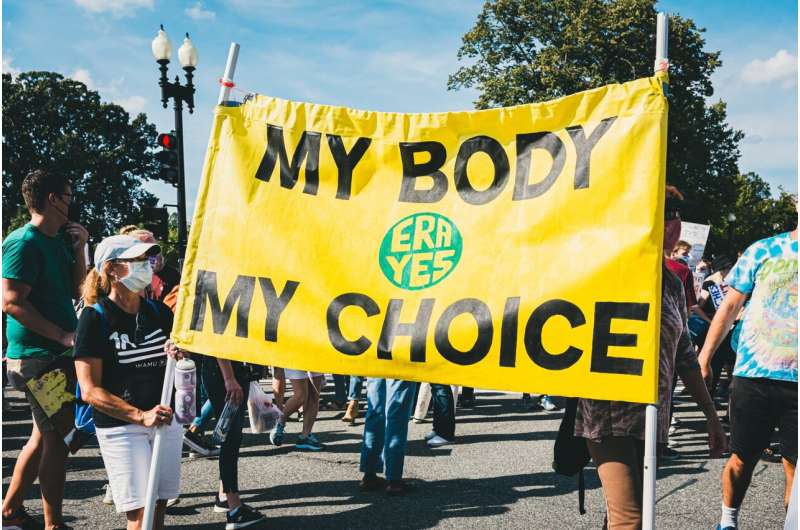Travel times to abortion facilities surged significantly after overturn of Roe v. Wade, study finds

About a third of women of reproductive age in the U.S. now live more than an hour from the closest abortion facility after the Supreme Court earlier this year struck down the constitutional right to abortion, a study found.
When more than a dozen states enacted complete or partial abortion bans after the Supreme Court ruling, the number of facilities that actively offer abortion care was cut by about a tenth, from 749 facilities to 671, according to the study, published this month in the Journal of the American Medical Association.
With this drop in facilities, the average travel time to get abortion care more than tripled, increasing from about 28 minutes in 2021 to 100 minutes after the Dobbs v. Jackson Women's Health Organization ruling, according to the study conducted by a team that included researchers from Boston Children's Hospital; Boston University School of Public Health; University of California, San Francisco, Harvard University; and Harvard Medical School.
In states with total abortion bans and laws banning abortions as early as six weeks of pregnancy, travel times increased by more than four hours, on average, the study found.
Southern states were the hardest hit. While once able to travel 15 minutes for an abortion before the Dobbs decision, women in Texas and Louisiana now must travel more than six hours, on average.
"We need to understand the diminished access to this essential health service in order to better understand what resources we need to invest to regain that access," Yulin Hswen, an assistant professor of epidemiology and biostatistics at University of California, San Francisco, and senior author of the study, said in a statement.
Terry McGovern, professor at the Columbia University's Mailman School of Public Health, said the study's results weren't surprising and "align with the very serious consequences that we were all expecting after Dobbs."
"The Supreme Court of the United States took away a right from women, girls and pregnant people, and it's clearly causing severe hardship in every possible way," she said.
Increased travel times feed into a variety of other barriers, including requiring people seeking abortions to spend more money on travel, take extra time off work and find childcare, McGovern said. She said these obstacles are only magnified for marginalized communities and for people who are uninsured or have lower incomes.
"Obviously, people who have money, access and resources and don't have to deal with structural racism and transphobia are going to have an easier time," McGovern said. "What this kind of research shows us is that the Supreme Court has placed additional burdens on a population that was already facing a lot of structural barriers constantly."
About 40% of Black women must travel over an hour for abortion care, compared with 15% before the Supreme Court ruling, according to the study. More than half of American Indian and Alaska Native women have to travel over an hour for abortion care.
Women without health insurance or with lower incomes also disproportionately faced longer trips for abortion care, the study found.
"Abortion is out of reach for too many people, especially people of color, low-income people, rural communities," said Hillary Schneller, senior staff attorney at the Center for Reproductive Rights. "After the Dobbs decision, that has only gotten so much worse."
Many of the remaining active clinics in states where abortion remains legal are now seeing an influx of patients traveling long distances for care, Schneller said. Clinics aren't able to keep up with the demand, creating long wait times for "very time-sensitive abortion care," she added.
McGovern and Schneller both expressed hope abortion bans in certain states could be appealed. They'd also like to see the Dobbs decision overturned.
McGovern also suggested ballot initiatives to enshrine access to the procedure and "getting more creative in thinking about where health services are located and about more convenient ways to offer services," including telemedicine and medications.
Schneller also said telehealth and abortion pills by mail are ways to increase access to abortion care but said "some of these avenues are not accessible to the communities that are most impacted by abortion bans." For example, both options often require internet access, which may not be available for many rural communities, she said.
"None of these are going to be a full solution," she said. "But there's great work happening on all of these fronts to help people access health care in their communities, whether that be through telehealth, the abortion pills by mail, or going to a clinic to see a physician."
(c)2022 USA Today
Distributed by Tribune Content Agency, LLC.



















